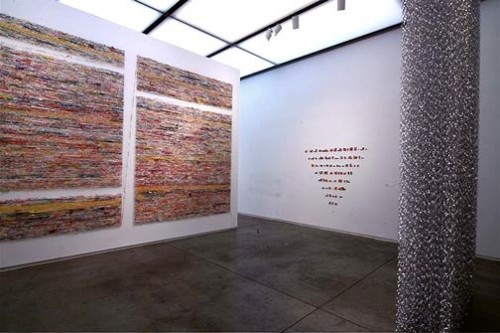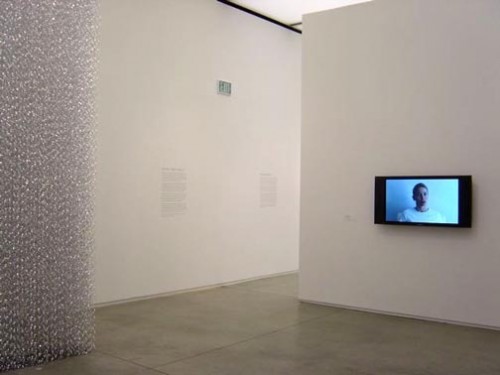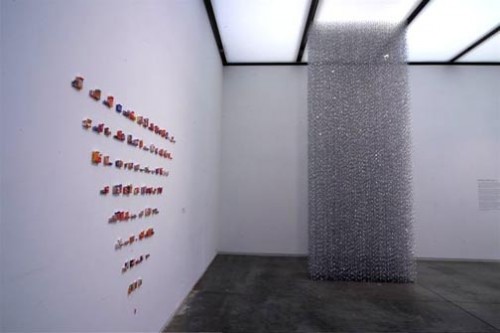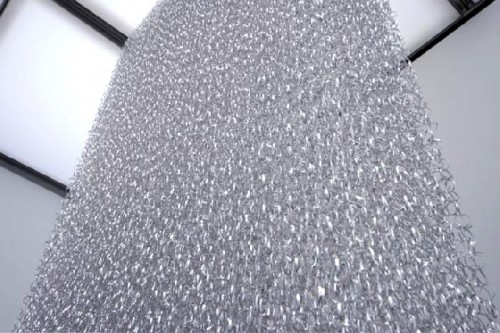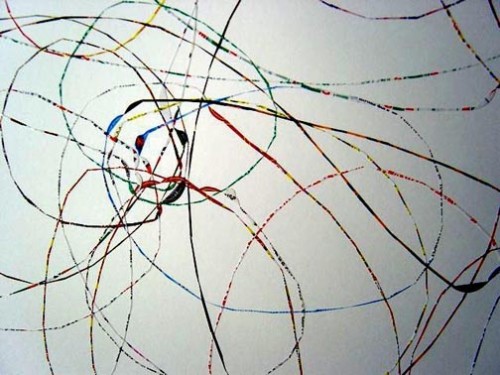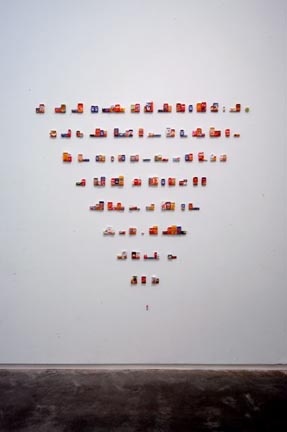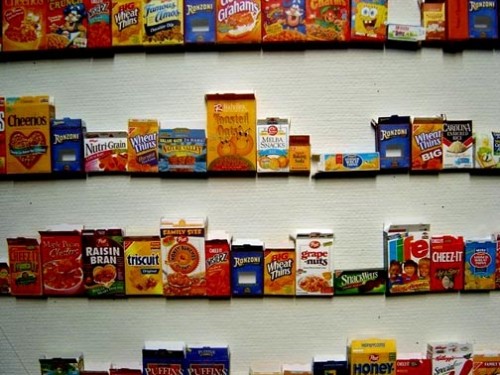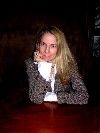Rachel Perry Welty: Beer and Burgers
Twist and Shout with ICA Finalist
By: Charles Giuliano - Mar 13, 2007
"The show ends this Sunday at 5 pm," Rachel Perry Welty said as we sat recently for a beer and burger. She was referring to her installation as one of four finalists for the ICA's Foster Prize for a Boston based artist. "We start to deinstall at 5:01 to make way for a Louise Bourgeois exhibition."
We were discussing the impact of participating in the opening of the new Institute of Contemporary Art which has evoked massive media coverage. While of course she is disappointed not to have won the $25,000 prize she has nothing but best wishes for the winner, Kelly Sherman, and support for the other two women, Shelia Gallagher and Jane D. Marsching. There was a lot of interaction among the finalists. Welty stated that she had worked as an "extra" on Gallagher's video and that her intern assisted her to install.
The fact that four women were selected as finalists by a jury that included only one male has caused some buzz. But she declined to offer an interpretation other than to observe that there are clearly many talented male artists in the community. While the legacy of having participated in the inaugural exhibitions of the ICA will always be a career highlight she could not define a direct impact. She is included in an exhibition at the prestigious Drawing Center in New York but that opportunity predated being selected for the ICA competition, for which one is nominated but cannot apply. Prior to the ICA show she has already shown at the Museum of Fine Arts, first as a Fifth Year and later as an alumna, Traveling Fellow. She shows with Boston's Barbara Krakow Gallery and has recently secured a major commission from the Johnson & Johnson Company for their New York headquarters. So her career track appeared to be strongly focused and being tapped as an ICA finalist is just the latest of a number of accomplishments.
This was our first meeting and one sensed that, for her, conducting interviews is not the most comfortable or enjoyable aspect of being an artist. But, it is a part of being a successful artist and perhaps the trade off is loosing some privacy and the anonymity of the studio. She admits to being a private person and explained how some of that fed into the enormously successful video she showed at the ICA in which she lip synchs and assumes the personas of a number of anonymous telephone answering machine messages. She understands the need to discuss the work but will not discuss what is in process because if she could explain it there would be no need to do it. A question about a work at the ICA "Wall" drew a long uncomfortable silence. Later that evening, however, she sent an e mail that filled in the gap. She described a radio interview in Alaska which wasn't really going anywhere as the interviewer do not appear to have a knowledge of visual art. She described taking over and spontaneously directing the discussion to what she felt should be said about the work.
You sense that for Welty making art has represented struggle and sacrifice but those are not her words. She came to art rather late after successful years in advertising and art direction. It was actually her mother who inspired her to go to the Museum School and for a brief time they overlapped as students. Although she did not elaborate you understood that she came from a remarkable family.
She was born in Japan where her father was a professor of East Asian history. She has been back to Japan two times since she left after completing the third grade in an international school. A couple of years ago she and her mother visited Japan when she won a Traveling Fellowship which resulted in an eight week circumnavigation of the globe. The family moved from Japan to Carleton College in Minnesota where she was a "faculty brat." He now teaches at the Fletcher School of Law and Diplomacy at Tufts University. She spent the years from 4 to 14 in Minnesota in a town noted for "Cows, Colleges and Contentment." She recalls that "It was a great place to grow up." She earned an undergraduate degree majoring in English Literature with a minor in French at Connecticut College. That included a junior year in Paris at the Sorbonne. She is fluent in French and understands some Japanese.
After college she landed an internship at an advertising agency. Through on the job training she learned to be an art director. "It was about ideas," she said, "And not about skills in drawing. We had a staff illustrator to develop the look of a concept. It was good training for today. I went about it in just the opposite way. Not from art school to advertising but from advertising to art school. It was fun and glamorous, paid well, but was not spiritually fulfilling. Later I was at the Museum School for four years and earned a diploma and stayed on for a fifth year in 2001. I won a Traveling Fellowship in 2001 and again in 2004."
The inspiration in this life and career change was her mother Sarah Hollis Perry. "My mother invited me to her review boards," Welty said. "Up until then I had seen bits and pieces. I was very surprised by the conversation about the work. It really excited me. That day I grabbed the catalogue and went out to the parking lot and sat in my car and read through it and even started picking out courses. I went home that night and told my husband that I wanted to go to art school. To his great credit he said 'ok how do we do this.' I had my own business (and a child now sixteen) as a free lance art director. For a time I did both, ran my business and went to school."
At the museum school she recalls studying just about everything but ceramics and, oddly enough, no video. She states that it helped that she was not coming from high school as she was able to focus. The school gave her credit for "life experience" in terms of completing credits but she took basic drawing and painting classes as a part of the foundation program. She appears to have thrived in that environment and states that later when she made her first video, on view at the ICA, she was able to take it up on her own because the Museum School had trained her to "question everything." That first one defines goals and establishes a project and then finds the means to get it done. But now there was no "staff artist" to whom to pass along ideas for execution.
Her successful first video "Karaoke Wrong Number" quite remarkably has been shown at both the MFA and ICA. But she describes the process and production as rather low tech. For example she knew nothing about lighting and set the camera up in her bedroom in front of a blank wall and shot with available light. The camera was placed on a tripod and after rehearsing and scripting out elaborate mime movements was all shot more or less in a single hour and a half take which involved getting up to start and stop filming. The material, the anonymous answering machine messages, were gathered over four years and archived on another recording machine. "I learned on the fly," she explained. "I had to put myself into the piece because they (the messengers) came to me. At first I worked with a police artist in order to envision these people. But then I needed to put myself into it to channel and be these people. It's all about the idea for me. If I want something I figure out how to do it. The technical requirements don't stop me. Because of the concept I didn't think the video should be slick. I transcribed the messages into a script. It was very detailed. The tone of the person was important. Were they anxious and nervous or demanding?"
Would you regard this as performance art and had you done anything like that previously? She mentioned being in some stage productions as a kid in Minnesota and responded that there had been some performance assignments for classes at the Museum School. But with no real background she described how she approached it like making a painting. When to push in and when to pull back. It was a matter of making decisions rather than reflecting the craft of the medium. She responded that she has made videos since that first effort and will continue "if an idea warrants it."
The work reflects how ideas are developed. There is a process as, for example, the pieces that have evolved from using the stickers on fruit as a material. These have been sliced and configured as a six and a half foot by three and a half foot drawing on view at the Drawing Center. "The Museum School taught you to question everything," she explained. "An idea such as my first video doesn't warrant gorgeous quality or an expensive camera. The work came out of the digital debris of my life. The messages were meant to be erased and disappear but I saved and collected them."
I tried to get an overview of the common theme and thread of the work. She resists giving such answers but remarked that it is generally about "the overlooked and invisible." Pressed on the question she paraphrased a recent thought while reading Flaubert that "There is not a particle of life that does not have some poetry within it." She continued that "There is an urge to look at things that most people do not pay attention to. It is a quiet way of being heard."
One of these humble materials, things we pay little attention to other than their utilitarian function, are the twist ties with which we seal plastic bags. How do they evolve into a complex piece such as "Wall" in the ICA? When the finalists were shown their spaces in the ICA galleries Welty describes how she "Did the math and concluded that working eight hours a day given the deadline there was no way to get the work done." So she posted an internet request for help. She was surprised to get some 300 responses. This was narrowed down to "40 dedicated helpers." She started to make appointments starting at 8:30 AM at Starbucks. There were half hour intervals between appointments but the individuals stayed on and eventually they formed a "twisting bee." After brief instruction they produced chains of loops all for the inducement of free coffee. They began to meet twice a week for the next four months. It worked she said because "People are starved for community and not just a free cup of coffee." A couple of the Twisters later helped to install the piece. But the actual wall proved to be just six feet and not the twelve feet that she and her helpers created. She hopes one day to show the complete piece.
Yes and what does "Wall" mean I asked. That's where we hit the wall I guess. I asked rhetorically if her response was along the lines of the Sontag thesis of "against interpretation?" But that didn't take hold. Later last night I got this e mail "I thought about one thing we left hanging. I didn't give you a clear answer when you asked me about the interpretive/non-interpretive (Susan Sontag) question. My feeling has always been that the idea is what moves me to make the work. If someone looks at it and only sees a beautiful form, that's okay. If the viewer wants to look deeper, the content is there.
"And regarding 'Wall' I see it having many interpretations: It talks about futility – this wall is flabby and purposeless – these silver ties are meant primarily to hold candy from falling out of a bag, not ceilings from falling in. Through it's sparkly 'look at me' aspect it also references our complicated relationship to desire and beauty. But it's also got political implications; walls create as many problems as they may solve -- Great Wall of China, Berlin Wall, the wall Congress recently approved between Mexico and the US, etc., etc. These are things I think about AFTER I make a work. I tend not to talk about it because I don't want to limit a viewer's interpretations."
What's on the immediate horizon is crafting some 1,100 product miniatures for the Johnson & Johnson commission. The objects will be similar to the "Food Pyramid" that she exhibited at the ICA. She discussed how that related back to her career as an art director and designer working with an exacto knife cutting and folding those tiny boxes and then the endless hours at Kinkos shrinking down the packaging designs to paste onto the containers. "People asked me where I got them, but I made them," she explained. I asked if there wasn't something obsessive compulsive about all this. She laughed and acknowledged there is some truth in this but wouldn't elaborate.
For now the spectacle is over. The ICA will move on. More than likely attendance and the media frenzy will level off. For Welty and the three other women life will become a bit more normal. But hey, bottom line, what was it like? "Wow, I am overwhelmed. 87,000 people from all over the world got to see my work." I reminded her of Scarlet O'Hara's last line in Gone with the Wind. "Tomorrow is another day." She smiled.



